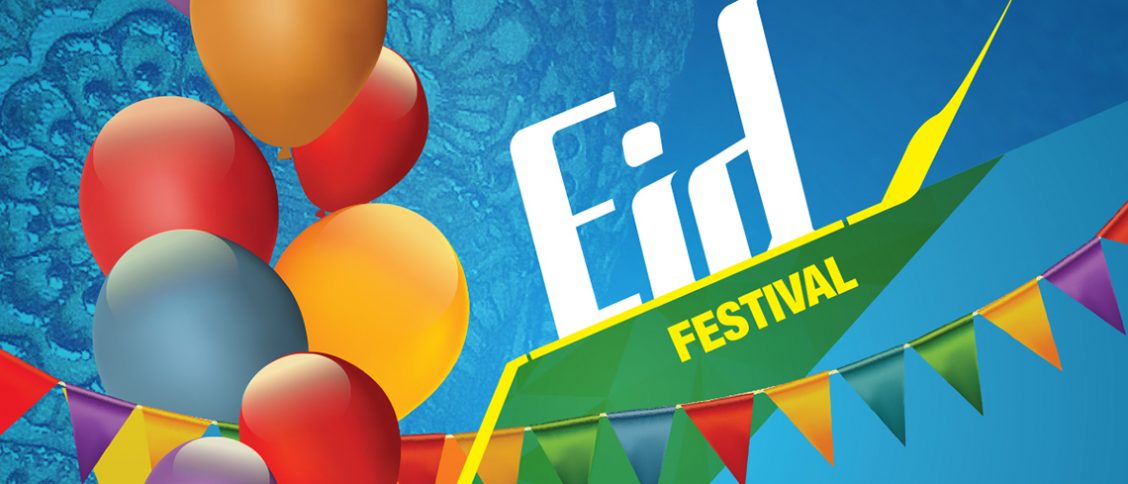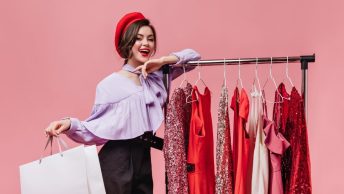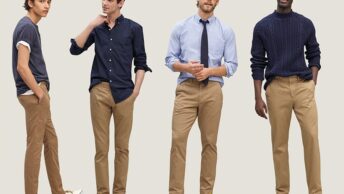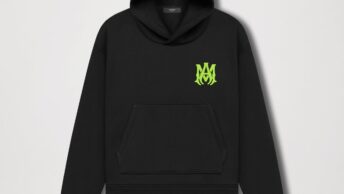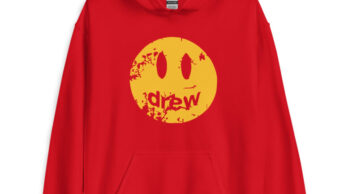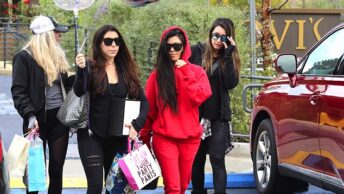Islam is the second most believed religion in the world after Christianity. And of course, being the second-largest religion, its followers; Muslims take over the world with a population of 1.8 billion. The Islamic community or Ummah seeks the guidance and will of their God, Allah, in every aspect of life. The Muslims or Islamic culture briefly describes the history and the sacrifices of their beloved Prophet/s through their festivals like eid festival and traditions.
Muslim Traditions and Festivals
Muslim tradition is not unknown to the face of the world. As a matter of fact, Muslim eid festivals are the most colourful and joyous events that take place twice a year. The Eids are the most eventual among the many other Muslim festivals that take place every year.
Eid-ul-Fitr is the first Eid of the year celebrated at the end of the Holy month, Ramadan. The second Eid of the year, called Eid-ul-Adha, is celebrated on the 10th day of the last Islamic month, Dhul-Haj.
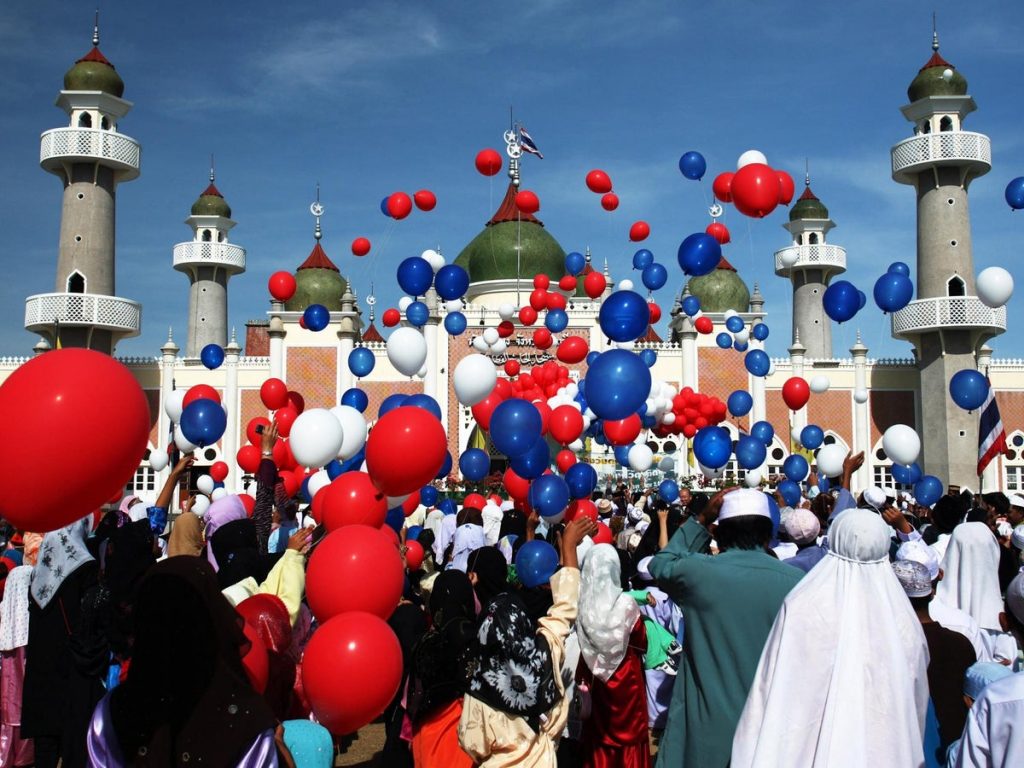
What Is Eid-ul-Fitr?
The literal meaning of Eid-ul-Fitr is “a festive of breaking the fast.” According to Islamic beliefs, it’s a gift from Allah to his followers who fasted the whole month of Ramadan. After abstaining from eating and drinking in between daylight hours for 30 days, Muslims celebrate Eid with their families, relatives, and friends with the greatest joys. The eagerness of joining large communities to feats together on delicious meals is what Eid-ul-Fitr all about. However, Eid is not just about it. The infamous Eid preparations such as, decor, Eid outfits, and jewellery complete this joyous event as a whole.
How Do Muslims Celebrate Eid Festival?
Every year, the Muslims await anxiously for the Holy month of Ramadan and the celebrations of the biggest eid festival of the year with great happiness. However, before the celebration of Eid, some rituals must take place first to show gratitude towards Allah for He has blessed.
The day starts with taking a Ghusl ꟷ the purifying shower to get rid of the impurities. The men of the families go to the Mosques to offer the dawn prayers ꟷ Namaz-e-Eid. Women of the house offer prayers at home and prepare breakfasts.
After hugging and wishing “Eid Mubarak” to each other, Zakat-ul-Fitr ꟷ a charity donation distributed among the needy people in the name of Allah before the Eid prayers start.
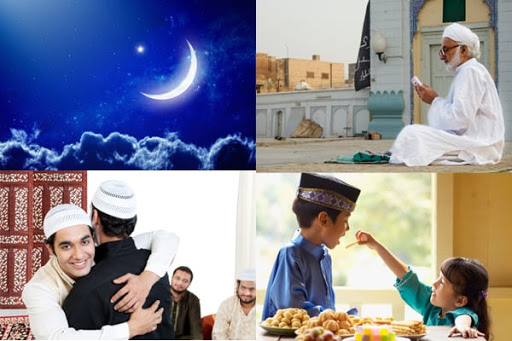
After the Eid commencement, the men come home and have breakfast. Gifts and best wishes are also exchanges between the family members as a part of the celebration.
How Do Women Prepare for Eid Festival?
For women, the Eid festival is nothing without the colourful and traditional Eid dresses, and we understand their eagerness and excitement for shopping. As this glorious event comes only twice a year, the preparations demand all the glam-time that it truly deserves.
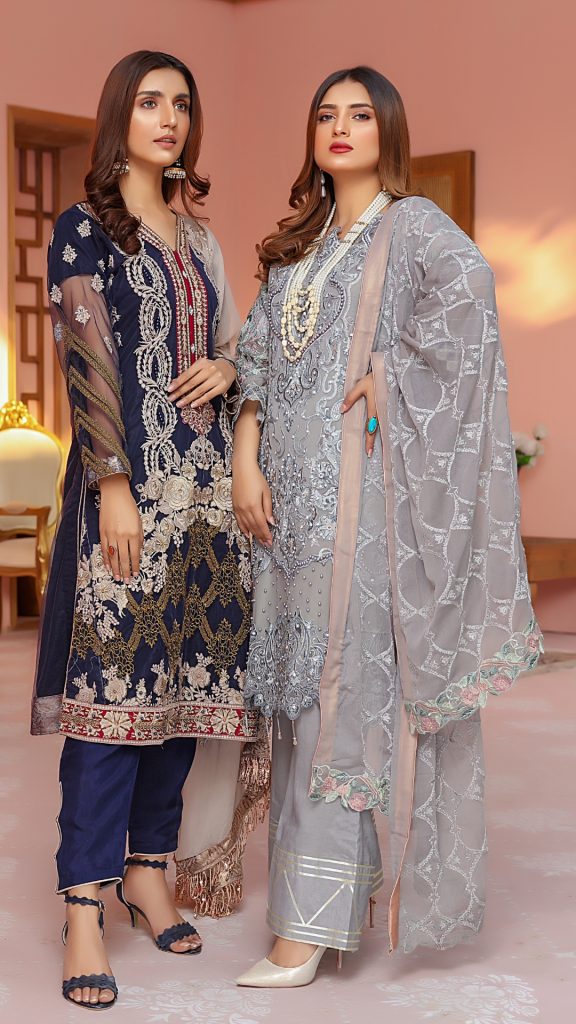
Women, in particular, begin to shop for Eid before or during the month of Ramadan. Their preparation includes shopping for groceries for the big day to buying beautiful ornaments for staging the home on the big event, from buying traditional Eid clothes to pairing them with the perfect sandals and matching pieces of jewellery. In conclusion, women have a lot on their plates.
As for traditional Eid clothes, women tend to visit stores-after-stores in search of the best Eid outfit. However, the process might feel like a burden for some young ladies. But through this article, we will help you to find the best traditional Eid dresses for women in the UK.
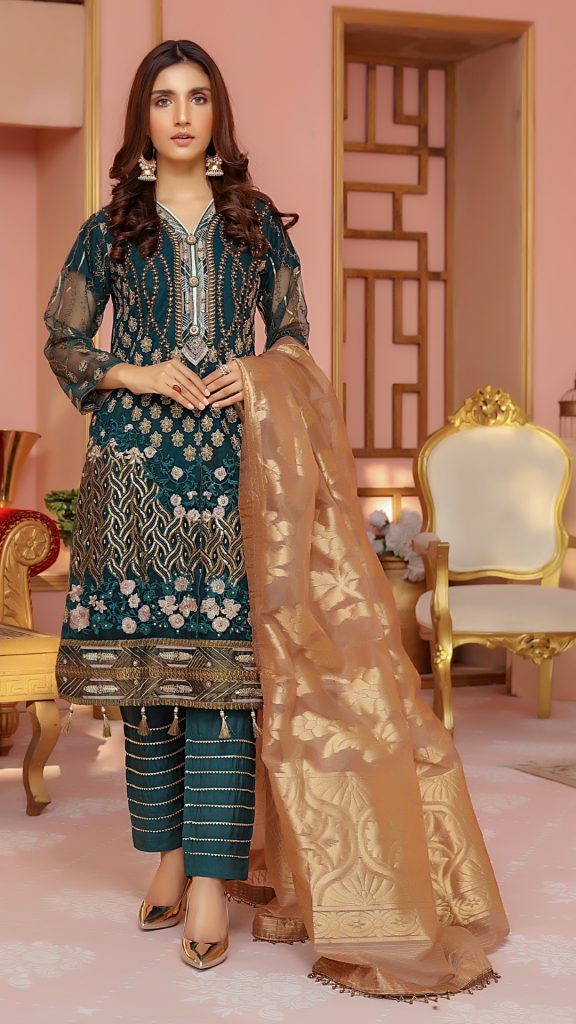
Libas e Jamila presents the best Eid and Traditional eid clothes UK Collection for Women living in the UK. As the population of the Asian community has been increasing in the West, the demands for the best traditional dresses are also piling up. That is why this brand ꟷ Libas e Jamila in the UK has launched a collection for women where you can find casual outfits, occasional wear, and traditional dresses in various varieties and a relatively lower rate.
Traditional Eid Dresses of Women
Shalwar Kameez
Shalwar Kameez ꟷ a traditional dress of both men and women, typically worn in South-East and Central Asia. Most women prefer wearing Shalwar Kameez, which is a combination of a three-piece set; the Shalwar, Kameez, and the optional third piece, the Dupatta. Shalwars are described as the bottom piece of the dress ꟷ trousers wider at the waist and narrow down into cuffed bottoms.
The Kameez is the shirt worn over Shalwar, with the sides left open and work done on collars, neck, or sleeves. Usually, Kameez comes in various designs and lengths that are far different from each other. It is women with the Dupatta, described as a long piece worn as a scarf by women. Though, not all women prefer wearing Dupattas with Shalwar Kameez.
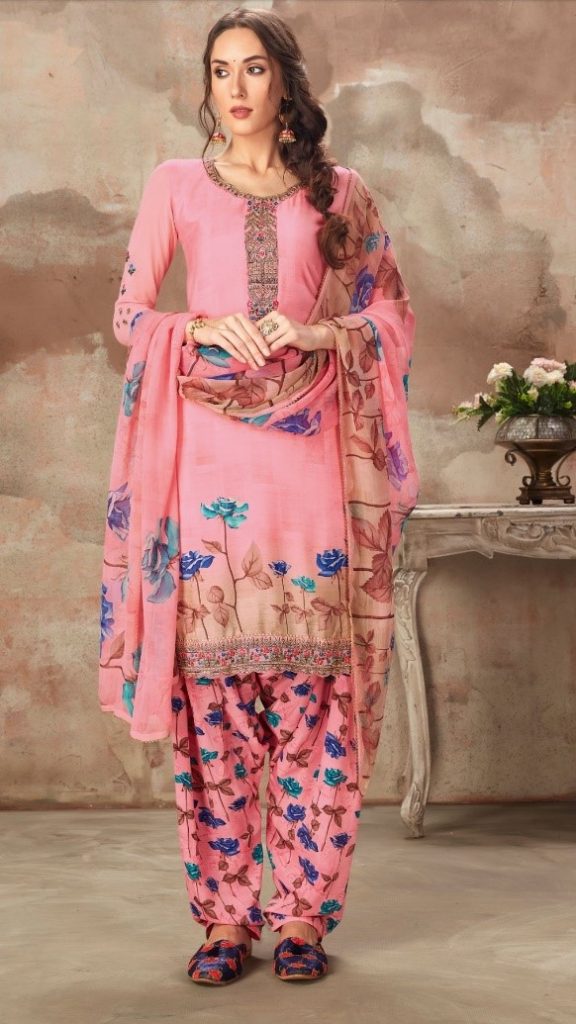
Overall, this pure aesthetic is a standard for occasional wear, traditional, and festival wear. Shalwar Kameez is a fusion of class and elegance. Much loved by the women of Pakistan and India, worn with absolute confidence at Hindu and Muslim festivals.
Sharara or Gharara for eid festival
Sharara is one of the most alluring traditional dresses among many more. In history, the women of the sub-continent worn Sharara for the very first time. And now, Pakistani, Bangladeshi, and Indian women wear Sharara on special occasions like weddings and traditional gatherings like Holi, Eid, Diwali, etc.
Like Shalwar Kameez, Sharara is a set of three-piece; Kurti, Gharra, and Dupatta. The Kurti is supposedly a shorter version of a shirt that reaches knees or above. The hem of the Kurti has thread or beads work crafted, known as the Gota.
Ghararas are described as wide-legged pants, flared out from the bottoms dramatically to give a wild flared look. Dupatta is an optional piece of clothing. However, most women prefer wearing Dupatta with Shararas as compared to Shalwar Kameez.
Detailed and heavy embroidered work is visible on the sleeves, neck, collars, Dupattas, and legs of Gharara. This royal masterpiece is the best of women as a perfect Eid outfit.
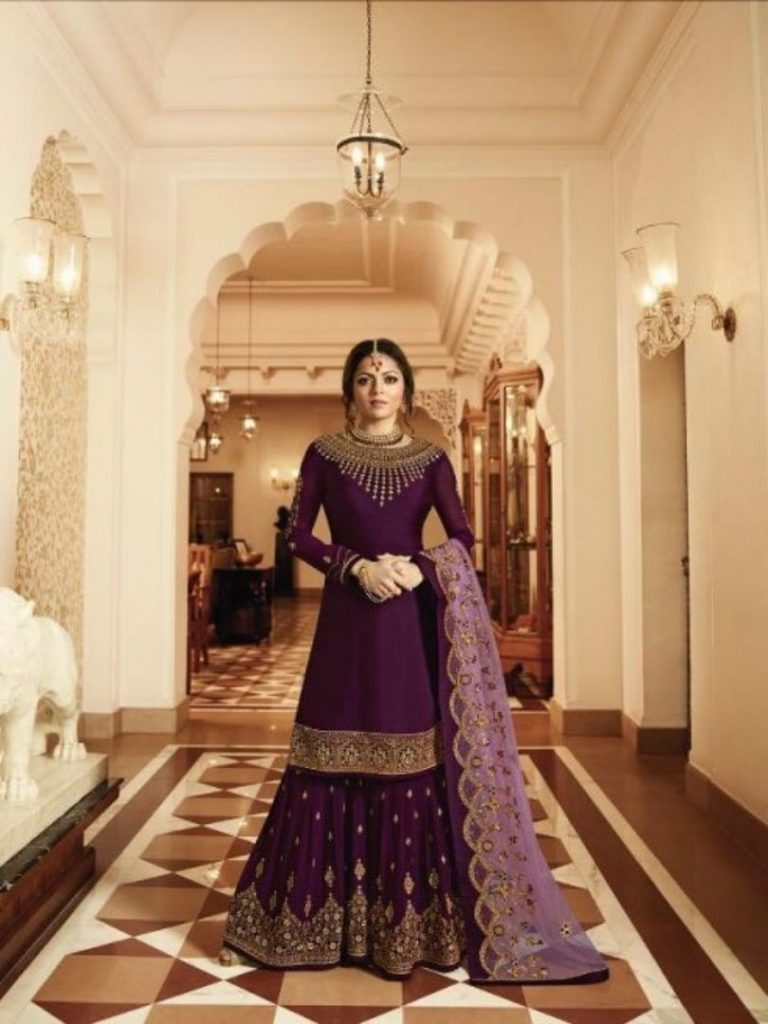
Anarkali Style Dresses
Originating from the Indian subcontinent, but as for the present times, women of Pakistan, Bangladesh, and India are wearing this traditional dress at weddings, casual events, and festivals.
Moreover, historically, this elegant beauty links with the famous Anarkali, a fictional courtesan in the Mughal Palace.
Anarkali is a set of three-piece; Top, Lahenga, and Dupatta. The top is a traditional style long frock with heavy embroidery and beautiful thread work, paired with a slim-fitted trouser ꟷ Lahenga or a Chori-dar Pajama. The Dupatta is the focal point of this dress, crafted with beautiful embroidery or mirror work.
Anarkali style dresses are the definition of beauty and elegance, like the name itself, which means “Delicate Bud of The Pomegranate Flower/Tree.”
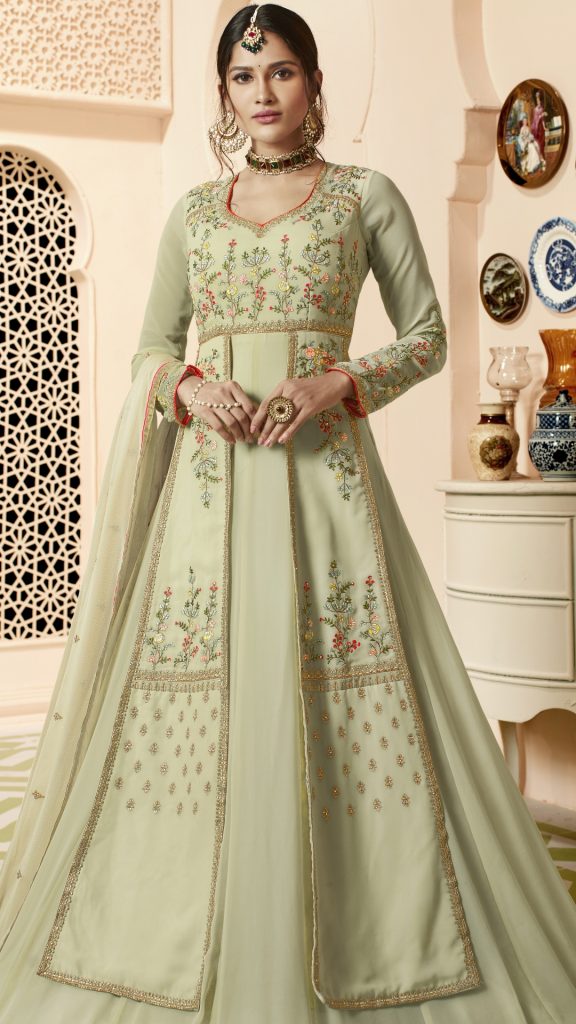
Conclusion
Muslim women find pleasure in wearing traditional clothes to certain traditions. Be them living in any region or country, the love and desire to wear dresses originating from their motherland never seems to change. Furthermore, the need to wear traditional jewellery and shoes comes hand-in-hand. For all your eid clothes 2022 visit: https://www.libasejamila.com/eid-clothes/

